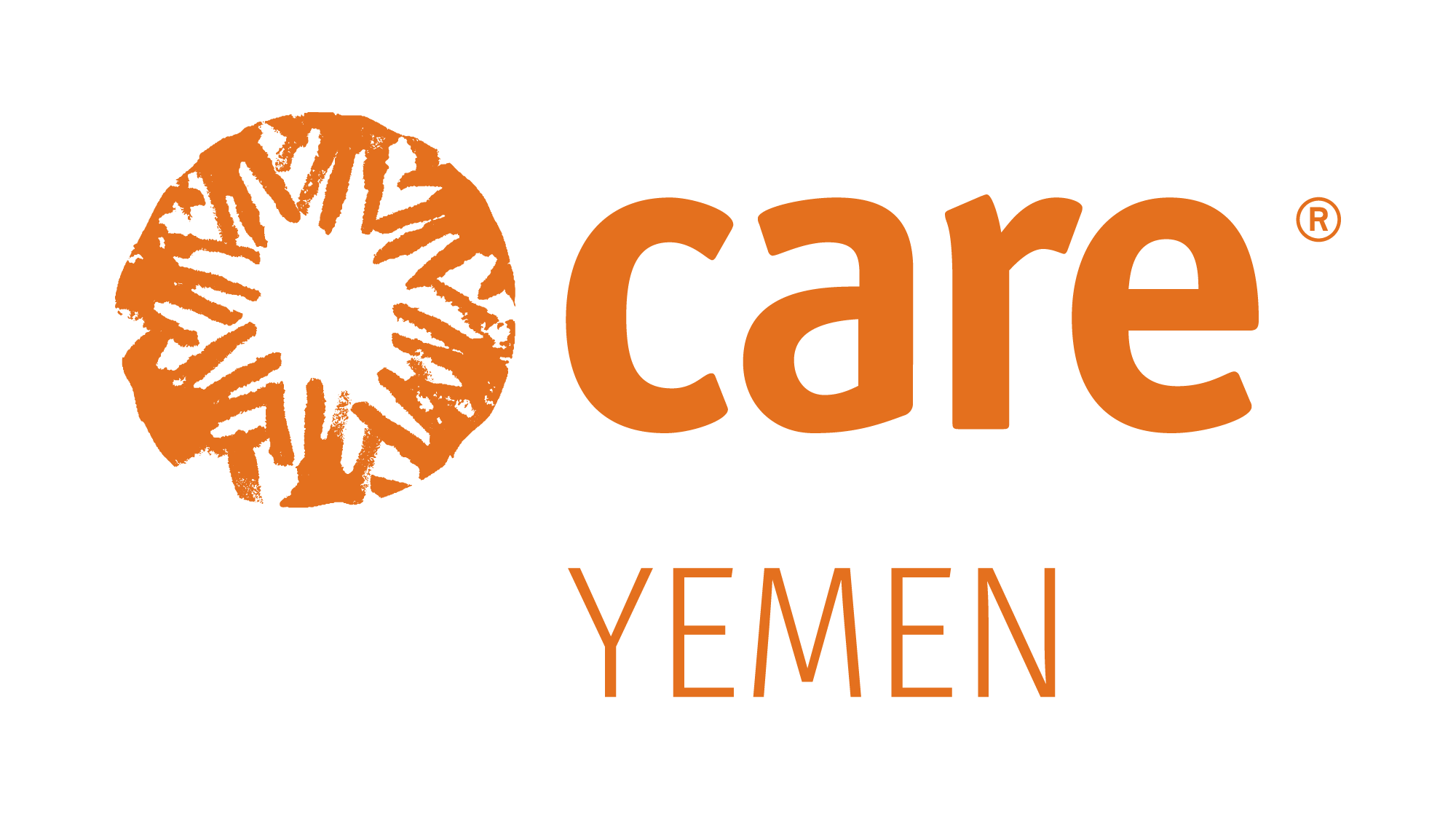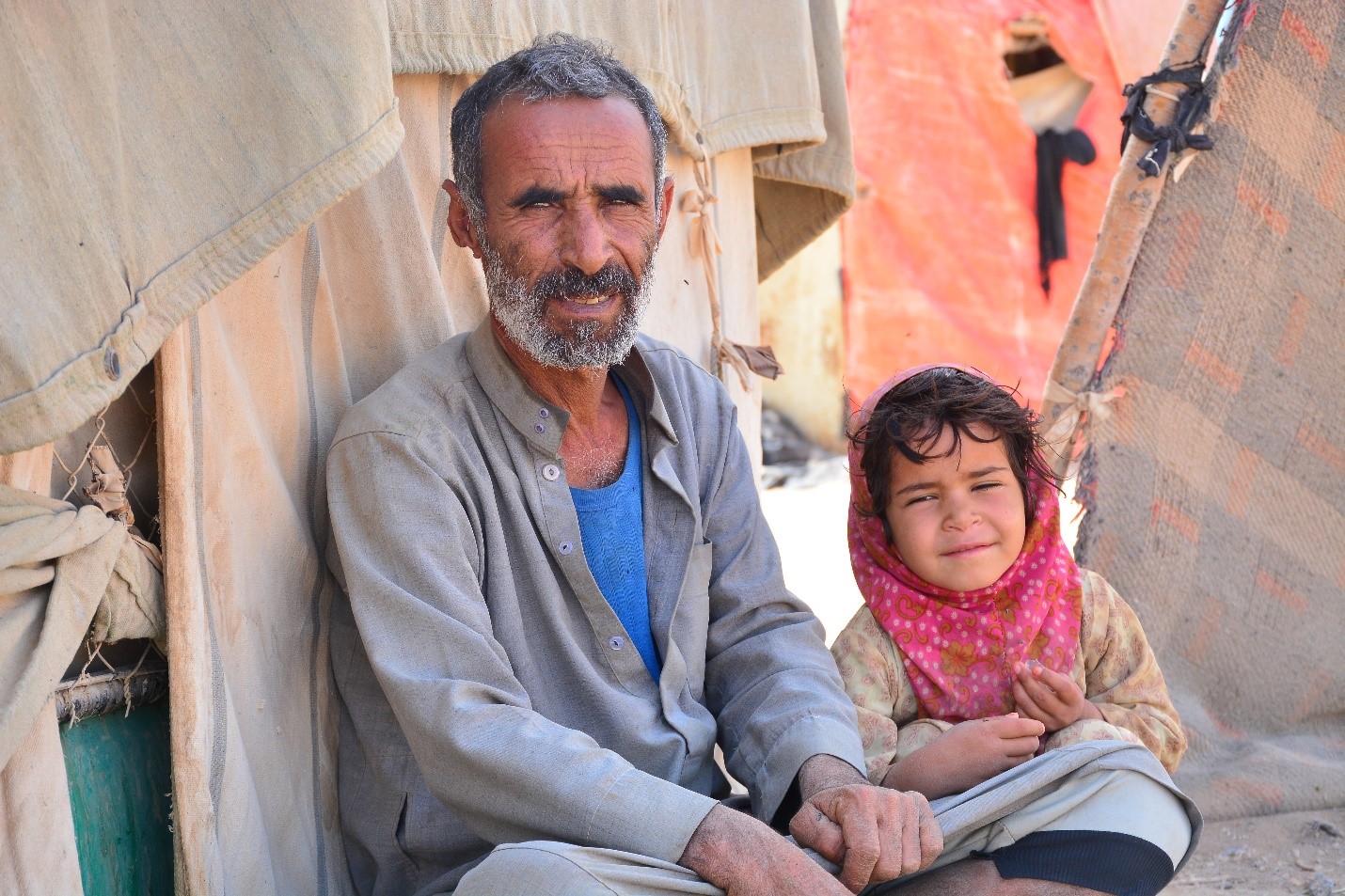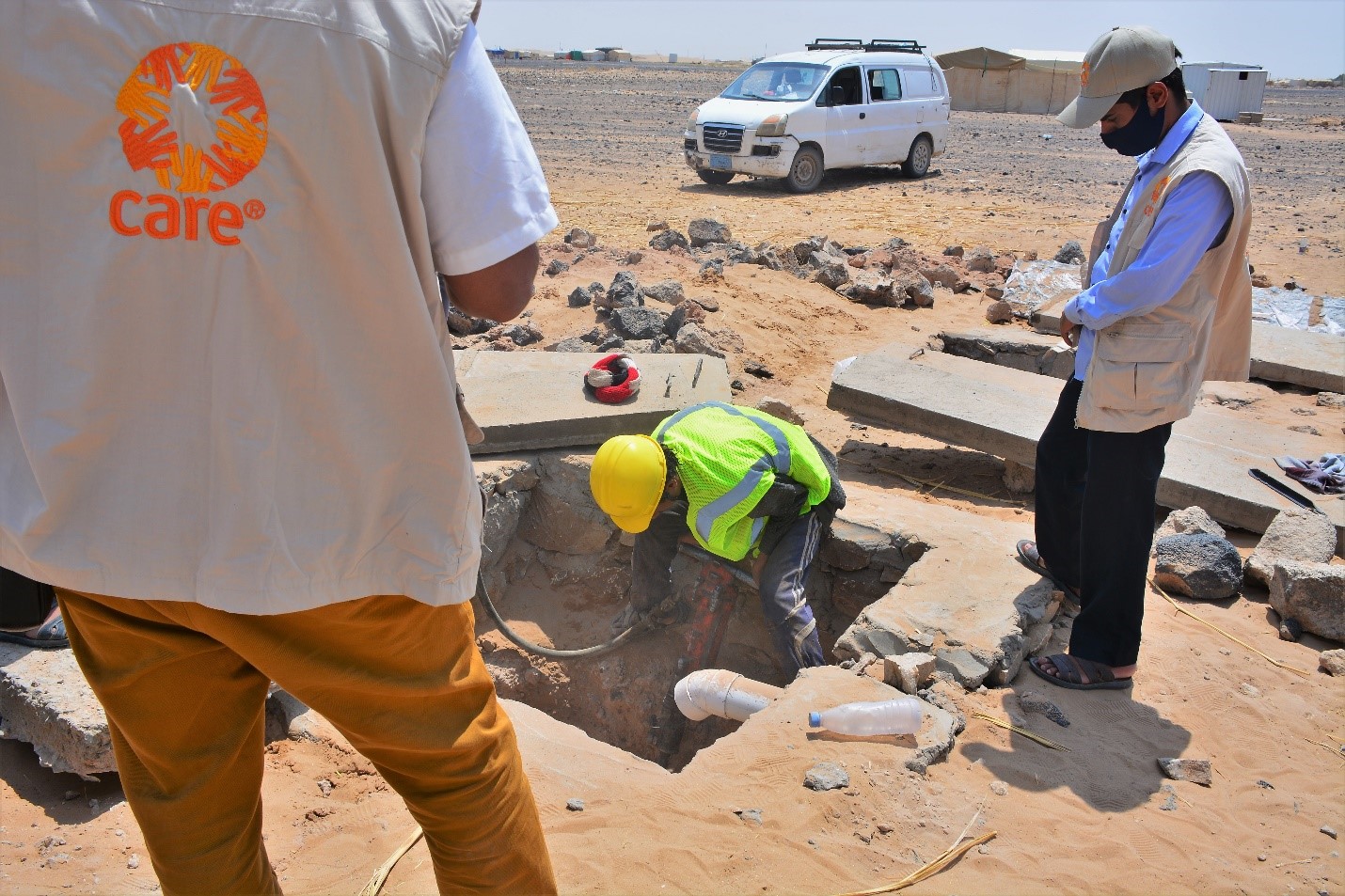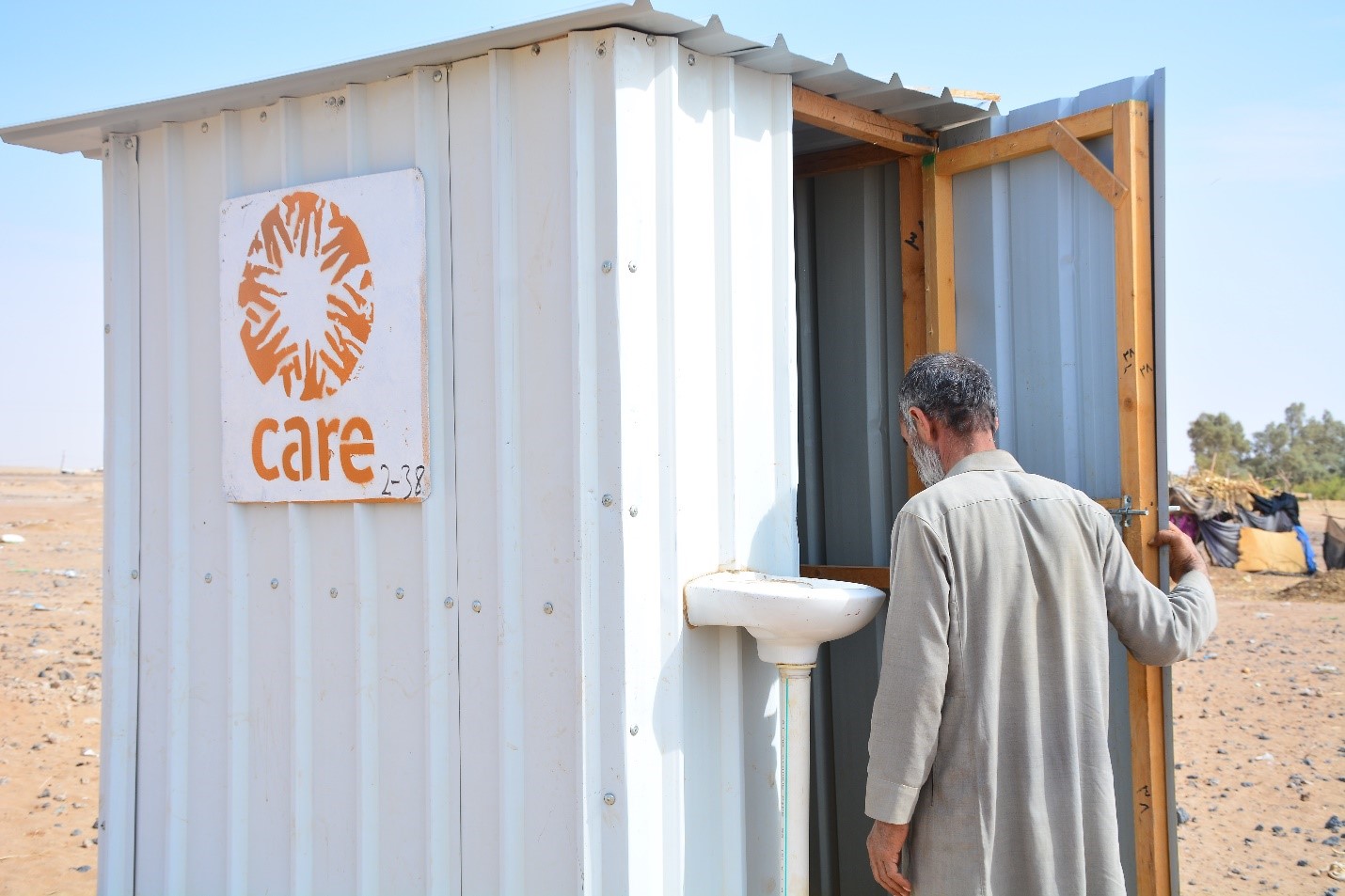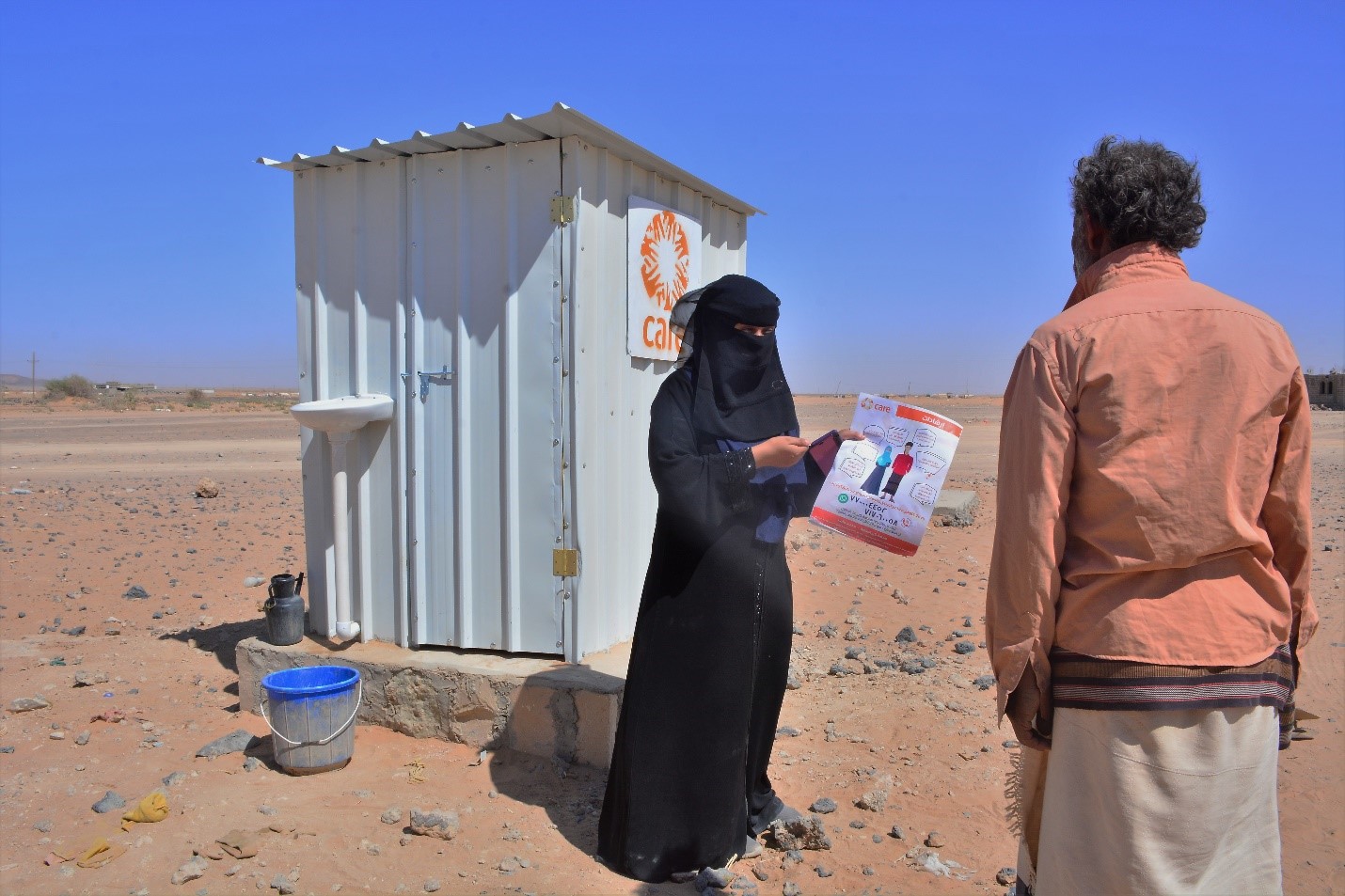“Back home, I used to have a decent life,” says 52-year-old Mabkhout, a father of ten children – eight boys and two girls. For fifty years, Mabkhout used to live happily with his family on a piece of land that he inherited from his ancestors in Al Jeedan district of Marib Governorate. The family had a big house, livestock, and clean water coming from the small stream that flows through their village. Mabkhout depended on cultivation, livestock breeding, and collecting firewood to provide for his family. As the fighting approached his hometown, Mabkhout had to make the difficult decision of leaving everything behind in search of safety.
Mabkhout is one of four million internally displaced Yemenis who were forced to flee their homes since the eruption of the conflict in Yemen seven years ago. Nearly one million internally displaced people (IDPs) live in 1,589 sites, including camps and informal settlements, often lacking access to proper shelters, clean water, and basic health and sanitation services. Most IDPs in Yemen have been displaced for more than two years, and often multiple times, further overstretching their resources and exacerbating their vulnerabilities.
“Our determination to survive is stronger than this relentless conflict,” says Mabkhout. “I still remember how we ran off for our lives when the fighting broke out in our area. We walked for two days until we reached the Zabedah area empty-handed. In the beginning, the area seemed safe and away from the fighting, so we started to collect bushes and branches and built a temporary shelter to protect us from wild animals and harsh weather conditions.”
“We tried to cope with our new life in the Zabedah area for eight months, but it was unbearable,” he says. “Our humble shelter couldn’t withstand the strong winds and high temperatures of the desert. Moreover, we didn’t have enough food, water, healthcare, and other minimum necessities of life. We eventually decided to move again and settle in Alset camp in Al Wadi district of Marib Governorate. Displacement life is exhausting,” adds Mabkhout.
Marib Governorate in northeastern Yemen hosts an estimated one million internally displaced persons (IDPs) and thousands of migrants. Nearly 13,000 families have been displaced towards Marib in 2021, according to the International Organization for Migration (IOM).[1] As the fighting escalated in different parts of Marib and Al Jawf governorates, more people fled to Al Wadi district, Marib’s remote eastern part.
Alset camp is one of 137 displacement sites in the Marib Governorate that are often overcrowded and lack basic services, including shelters, clean water, and safe sanitation facilities. Poor hygiene and sanitation conditions, combined with the high number of people living in camps, increase the risk of disease outbreaks among IDPs. Families in the camp struggle to access clean water for drinking, cooking, and washing. In addition to water shortage, families don’t have access to latrines, handwashing facilities, and hygiene items to maintain their health.

